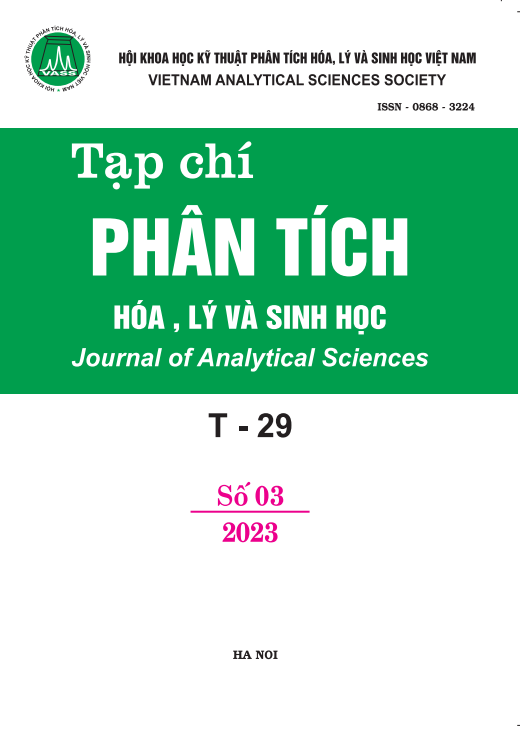NGHIÊN CỨU THIẾT LẬP QUY TRÌNH PHÂN TÍCH PCBs TRONG MẪU TRẦM TÍCH BIỂN BẰNG PHƯƠNG PHÁP SẮC KÝ KHÍ DETECTOR CỘNG KẾT ĐIỆN TỬ (GC-ECD)
Tóm tắt
Polychlorinated Biphenyls (PCB) is one of 12 groups of Persistent Organic Pollutants (POPs) that the
Stockholm Convention regulates for safe management, emission reduction and progress towards complete
disposal since 2004. The use of PCBs in industry (e.g., capacitors and transformers, heat transfer and antihydraulic agents, explosion-proof additives, in paint resins, long-lasting pesticides, etc.) can lead to their
significant residues in environments such as soil, water and sediment. In this study, PCBs in the marine
sediment samples collected from the coastal area beside Dinh An, Tran De estuaries (Hau River) in Soc
Trang province was determined using gas chromatography with ECD detector. The study on selection of
sediment samples preparation was implemented for getting better recovery efficiency. The established
procedure for PCBs analysis showed that the detection limit of method (MDL) and the quantification limit of
method (MQL) of seven congeners were in the range of 0.051-0.060 µg/kg and 0.168-0.196 µg/kg,
respectively. The recovery was achieved from 70 to 120% with a relative standard deviation (RSD) lower
than 15%, and the relative error was about 10.3% with the analysis of a certified reference material (CRM).
The procedure for analysis of PCBs is thus sufficiently accurate, reliable and applicable to evaluate PCBs in
marine sediment samples. The content of PCBs in the above - mentioned samples ranged from 0.21 ± 0.02 to
57.22 ± 6.40 µg/kg.

